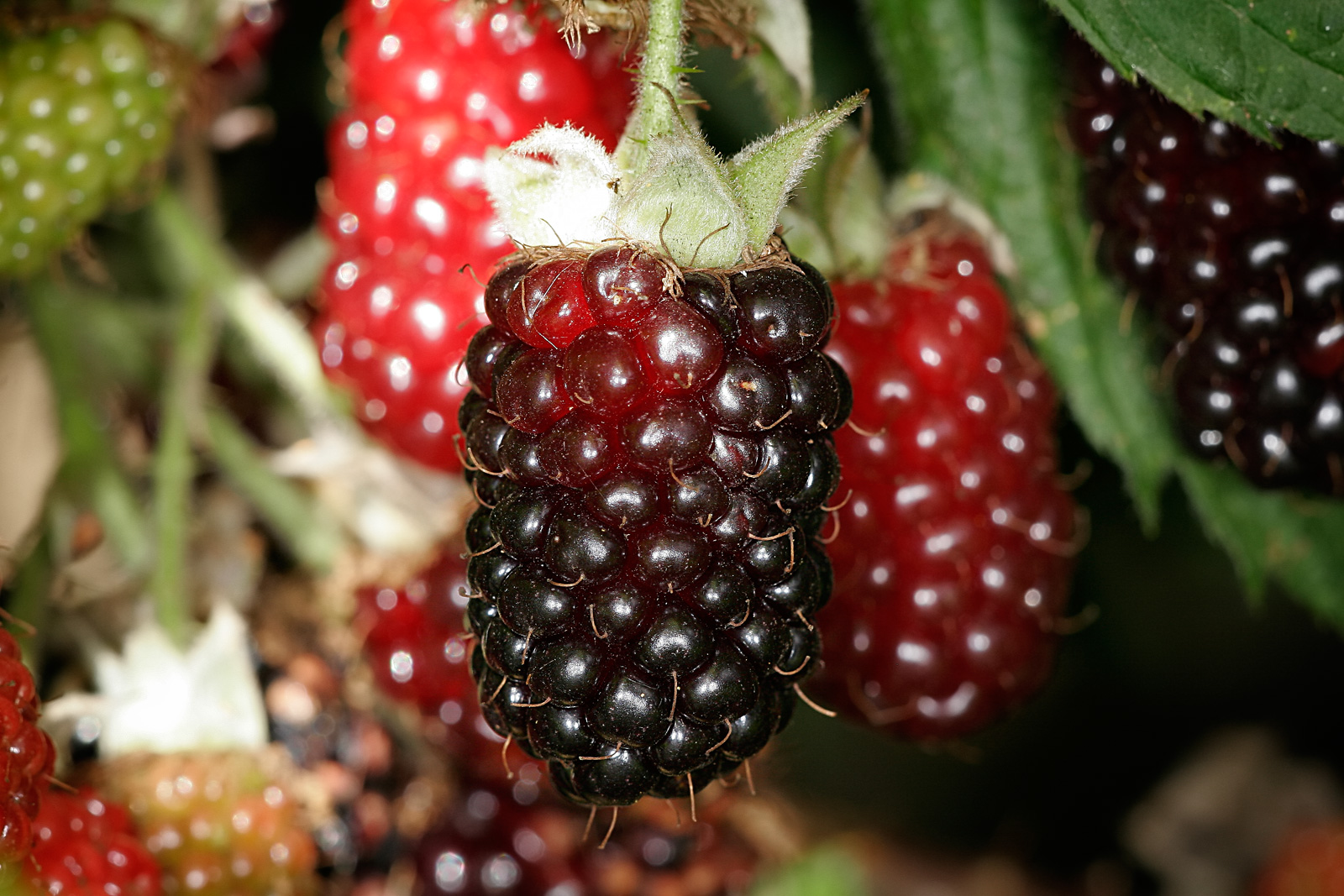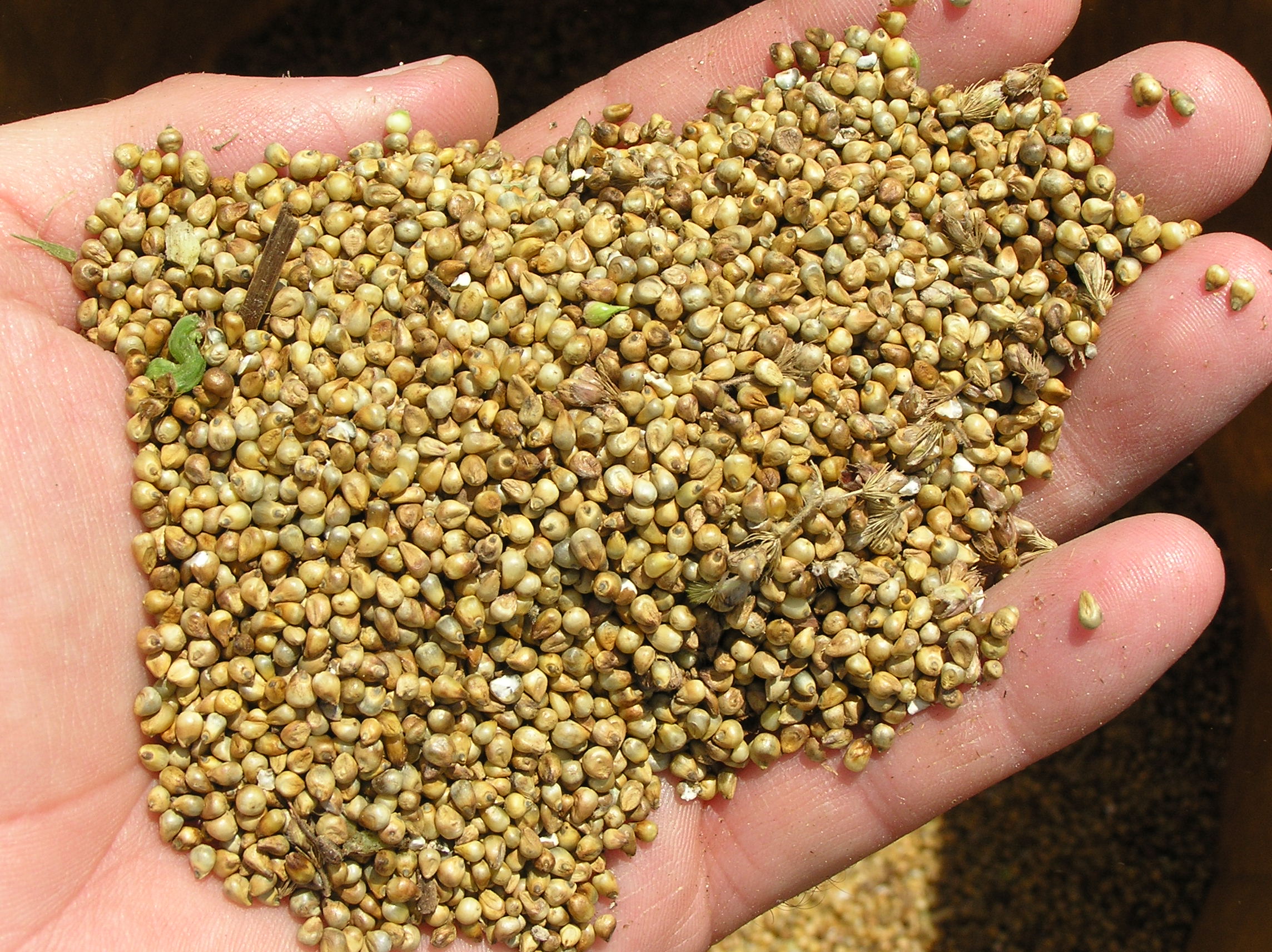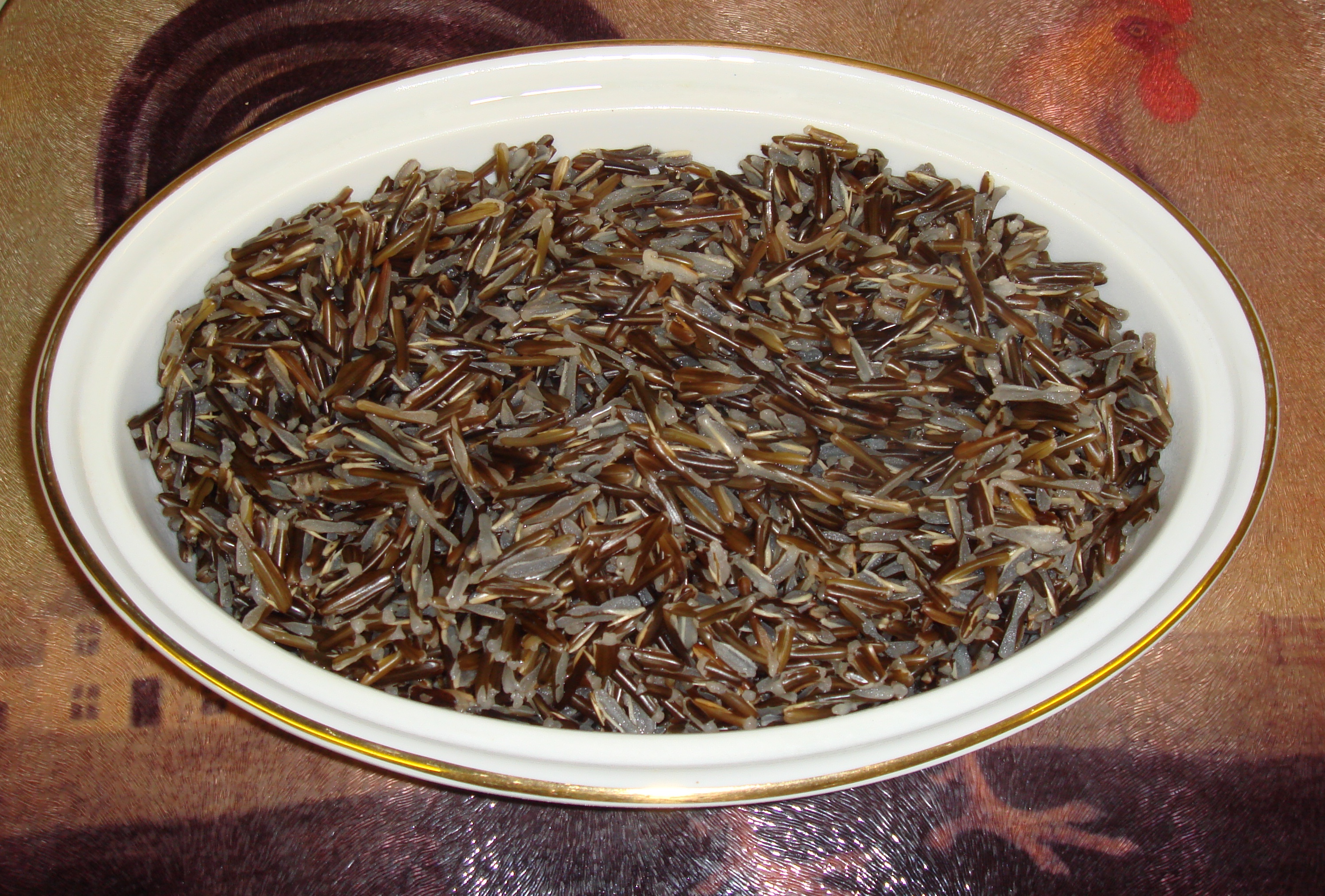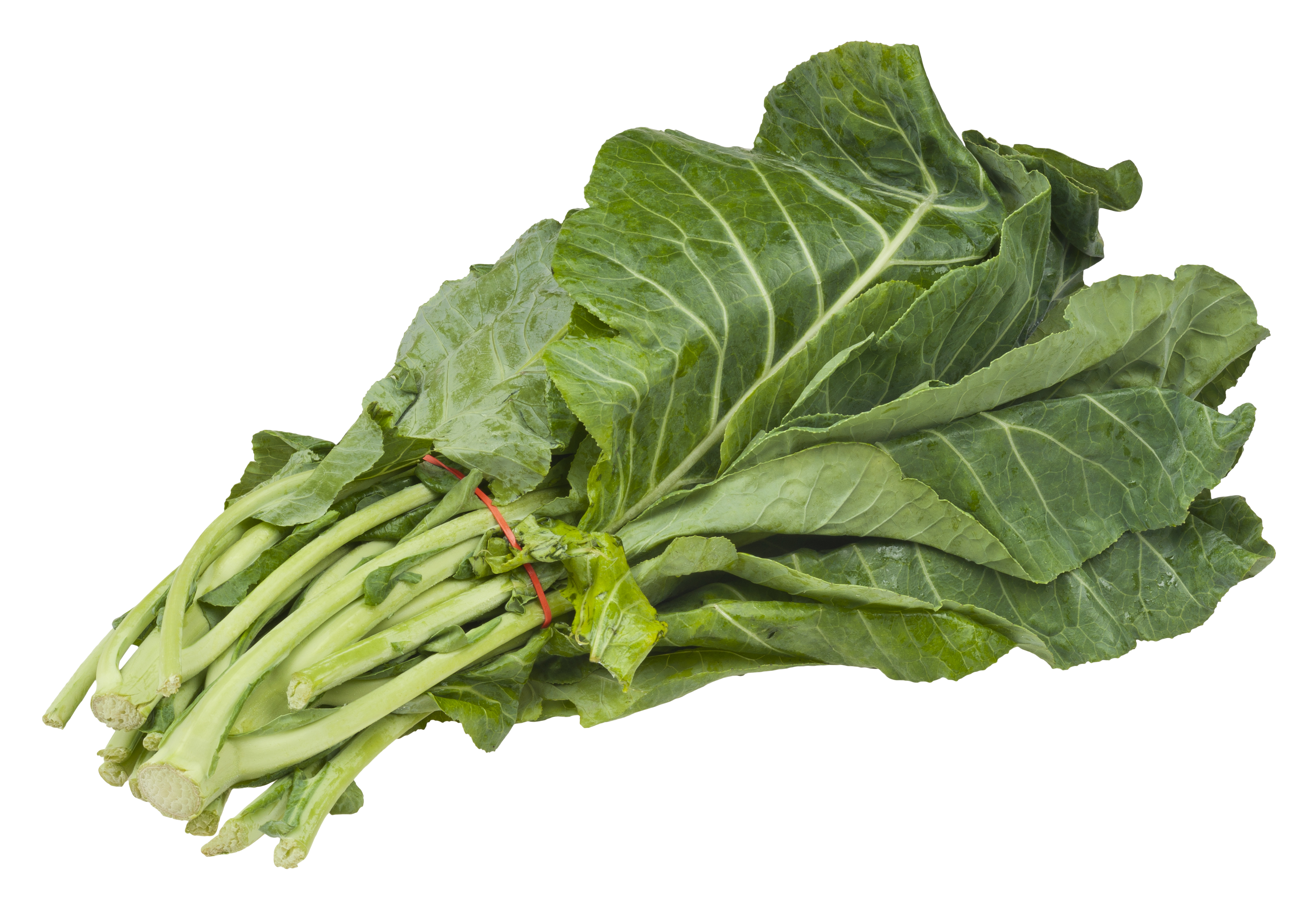shared http://www.todaysdietitian.com/newarchives/063008p28.shtml
July 2008 Issue
The Top Fiber-Rich Foods List
By Sharon Palmer, RD
Today's Dietitian
Vol. 10 No. 7 P. 28
By Sharon Palmer, RD
Today's Dietitian
Vol. 10 No. 7 P. 28
Today's Dietitian is doing its part to push the fiber intake of Americans with its fabulous list of the highest fiber foods people should be eating today.
Many areas of nutrition tend to elicit controversy, but dietary fiber is usually not one of them. Scientific evidence links fiber intake to a plethora of health benefits, including treating and preventing constipation, hemorrhoids, and diverticulosis; decreasing blood cholesterol levels, which protects against certain forms of cancer; and increasing satiety to help control weight.
There are a number of health benefits for fiber. The most promising benefit that is receiving more and more attention is fiber's role in immune health. We know that cardiovascular disease, diabetes, and obesity have underlying inflammatory processes. Dietary fiber may play a role to modulate the immune system and therefore produce a decreased risk of cardiovascular disease, diabetes, cancer, and obesity. There is wonderful, intriguing work going on in this area now, says Roger A. Clemens, DrPH, CNS, FACN, FIFT, a professor in the regulatory science program in the School of Pharmacy at the University of Southern California and a volunteer scientific spokesperson for the Institute of Food Technologists with more than 30 years of experience in the field.
Consumers are cued into fiber's health benefits. According to a 2007 International Food Information Council survey, 86% of consumers linked fiber with a healthy digestive system and 73% associated whole grains with heart disease prevention. There is consumer interest in fiber, but the real challenge is getting them to comply. People complain a lot about flatulence. For most people, the frequent gastric distress will go away, reports Clemens. The Institute of Medicine recommends dietary fiber intake for adults aged 50 and younger of 38 grams for men and 25 grams for women, and for men and women older than 50, an intake of 30 and 21 grams, respectively. But Americans are falling seriously short of the recommended goal, with an average intake of about 15 grams per day.
Many whole plant foods are rich in different types of dietary fiber, such as pectin, gum, mucilage, cellulose, hemicellulose, lignin, and soluble fiber. Consuming a variety of fibers is suggested to gain the maximum benefits of a high-fiber diet. Clemens also believes that the future for raising the fiber intake of Americans may be through food science advancements. “I think the future for fiber will involve alternative sources of dietary fiber from tree bark, algae, seaweed, and various kinds and parts of vegetables not previously considered edible, such as peels of fruits and vegetables. With today's food science and emerging technologies, food manufacturers are putting dietary fiber into almost any kind of food, such as chocolate, powdered beverages, and infant formula, he says.
In recognition of fiber's benefits, Today's Dietitian looks at some of the best ways to boost fiber intake,from whole to fortified foods,using data from the USDA National Nutrient Database for Standard Reference.
Top Fiber-Rich Foods
1. Get on the Bran Wagon
One simple way to increase fiber intake is to power up on bran. Bran from many grains is very rich in dietary fiber. Oat bran is high in soluble fiber, which has been shown to lower blood cholesterol levels. Wheat, corn, and rice bran are high in insoluble fiber, which helps prevent constipation. Bran can be sprinkled into your favorite foods,from hot cereal and pancakes to muffins and cookies. Many popular high-fiber cereals and bars are also packed with bran.
| Food | Portion | Amount of Fiber |
| Oat bran, raw (yến mạch) | 1 ounce | 12 g |
| Wheat bran, raw (bột lúa mạch) | 1 ounce | 12 g |
| Corn bran, raw (bột bắp) | 1 ounce | 22 g |
| Rice bran, raw | 1 ounce | 6 g |
| Fiber One Bran Cereal | 1/2 cup | 14 g |
| All-Bran Cereal | 1/2 cup | 10 g |
| Fiber One Chewy Bars | 1 bar | 9 g |
2. Take a Trip to Bean Town
Beans really are the magical fruit. They are one of the most naturally rich sources of fiber, as well as protein, lysine, vitamins, and minerals, in the plant kingdom. It's no wonder so many indigenous diets include a bean or two in the mix. Some people experience intestinal gas and discomfort associated with bean intake, so they may be better off slowly introducing beans into their diet. Encourage a variety of beans as an animal protein replacement in stews, side dishes, salads, soups, casseroles, and dips.
| Food | Portion | Amount of Fiber |
| Lima beans, cooked | 1 cup | 14 g |
| Adzuki beans, cooked | 1 cup | 17 g |
| Broad beans (fava), cooked | 1 cup | 9 g |
| Black beans, cooked | 1 cup | 15 g |
| Garbanzo beans, cooked | 1 cup | 12 g |
| Lentils, cooked | 1 cup | 16 g |
| Cranberry beans, cooked | 1 cup | 16 g |
| Black turtle soup beans, cooked | 1 cup | 17 g |
Kidney beans, cooked | 1 cup | 16 g |
| Navy beans, cooked | 1 cup | 19 g |
| White beans, small, cooked | 1 cup | 19 g |
| French beans, cooked | 1 cup | 17 g |
| Mung beans, cooked | 1 cup | 15 g |
| Yellow beans, cooked | 1 cup | 18 g |
| Pinto beans, cooked | 1 cup | 15 g |
3. Go Berry Picking
Jewel-like berries are in the spotlight due to their antioxidant power, but let's not forget about their fiber bonus. Berries happen to yield one of the best fiber-per-calorie bargains on the planet. Since berries are packed with tiny seeds, their fiber content is typically higher than that of many fruits. Clients can enjoy berries year-round by making the most of local berries in the summer and eating frozen, preserved, and dried berries during the other seasons. Berries make great toppings for breakfast cereal, yogurt, salads, and desserts.
Jewel-like berries are in the spotlight due to their antioxidant power, but let's not forget about their fiber bonus. Berries happen to yield one of the best fiber-per-calorie bargains on the planet. Since berries are packed with tiny seeds, their fiber content is typically higher than that of many fruits. Clients can enjoy berries year-round by making the most of local berries in the summer and eating frozen, preserved, and dried berries during the other seasons. Berries make great toppings for breakfast cereal, yogurt, salads, and desserts.
| Food | Portion | Amount of Fiber |
| Raspberries, raw | 1 cup | 8 g |
| Blueberries, raw | 1 cup | 4 g |
| Currants (red and white), raw | 1 cup | 5 g |
| Strawberries, raw | 1 cup | 3 g |
Boysenberries, frozen | 1 cup | 7 g |
| Gooseberries, raw | 1 cup | 6 g |
| Loganberries, frozen | 1 cup | 8 g |
| Elderberries, raw | 1 cup | 10 g |
| Blackberries, raw | 1 cup | 8 g |
4. Wholesome Whole Grains
One of the easiest ways to up fiber intake is to focus on whole grains. A grain in nature is essentially the entire seed of the plant made up of the bran, germ, and endosperm. Refining the grain removes the germ and the bran; thus, fiber, protein, and other key nutrients are lost. The Whole Grains Council recognizes a variety of grains and defines whole grains or foods made from them as containing “all the essential parts and naturally-occurring nutrients of the entire grain seed. If the grain has been processed, the food product should deliver approximately the same rich balance of nutrients that are found in the original grain seed.†Have clients choose different whole grains as features in side dishes, pilafs, salads, breads, crackers, snacks, and desserts.
One of the easiest ways to up fiber intake is to focus on whole grains. A grain in nature is essentially the entire seed of the plant made up of the bran, germ, and endosperm. Refining the grain removes the germ and the bran; thus, fiber, protein, and other key nutrients are lost. The Whole Grains Council recognizes a variety of grains and defines whole grains or foods made from them as containing “all the essential parts and naturally-occurring nutrients of the entire grain seed. If the grain has been processed, the food product should deliver approximately the same rich balance of nutrients that are found in the original grain seed.†Have clients choose different whole grains as features in side dishes, pilafs, salads, breads, crackers, snacks, and desserts.
| Food | Portion | Amount of Fiber |
| Amaranth, grain | 1/4 cup | 6 g |
| Barley, pearled, cooked | 1 cup | 6 g |
| Buckwheat groats, cooked | 1 cup | 5 g |
| Popcorn, air popped | 3 cups | 4 g |
| Oats (old fashioned), dry | 1/2 cup | 4 g |
| Rye flour, dry | 1/4 cup | 7 g |
Millet, cooked | 1 cup | 2 g |
Quinoa, cooked | 1 cup | 5 g |
Teff, grain, dry | 1/4 cup | 6 g |
| Triticale, flour, dry | 1/4 cup | 5 g |
| Wheat berries, dry | 1/4 cup | 5 g |
Wild rice, cooked | 1 cup | 3 g |
| Wheat flour (whole wheat), dry | 1/4 cup | 4 g |
| Brown rice, cooked | 1 cup | 4 g |
| Bulgur, cooked | 1 cup | 8 g |
| Bread (whole wheat), sliced | 1 slice | 2 g |
| Crackers, rye wafers | 1 ounce | 6 g |
| Spaghetti (whole wheat), cooked | 1 cup | 6 g |
5. Sweet Peas
Peas,from fresh green peas to dried peas,are naturally chock full of fiber. In fact, food technologists have been studying pea fiber as a functional food ingredient. Clients can make the most of peas by using fresh or frozen green peas and dried peas in soups, stews, side dishes, casseroles, salads, and dips.
Peas,from fresh green peas to dried peas,are naturally chock full of fiber. In fact, food technologists have been studying pea fiber as a functional food ingredient. Clients can make the most of peas by using fresh or frozen green peas and dried peas in soups, stews, side dishes, casseroles, salads, and dips.
| Food | Portion | Amount of Fiber |
| Cow peas (blackeyes), cooked | 1 cup | 11 g |
| Pigeon peas, cooked | 1 cup | 9 g |
| Peas, split, cooked | 1 cup | 16 g |
| Peas, green, frozen | 1 cup | 14 g |
| Peas (edible podded), cooked | 1 cup | 5 g |
6. Green, the Color of Fiber
Deep green, leafy vegetables are notoriously rich in beta-carotene, vitamins, and minerals, but their fiber content isn't too shabby either. There are more than 1,000 species of plants with edible leaves, many with similar nutritional attributes, including high-fiber content. While many leafy greens are fabulous tossed in salads, saut ©ing them in olive oil, garlic, lemon, and herbs brings out a rich flavor.
Deep green, leafy vegetables are notoriously rich in beta-carotene, vitamins, and minerals, but their fiber content isn't too shabby either. There are more than 1,000 species of plants with edible leaves, many with similar nutritional attributes, including high-fiber content. While many leafy greens are fabulous tossed in salads, saut ©ing them in olive oil, garlic, lemon, and herbs brings out a rich flavor.
| Food | Portion | Amount of Fiber |
| Turnip greens, cooked | 1 cup | 5 g |
| Mustard greens, cooked | 1 cup | 5 g |
Collard greens, cooked | 1 cup | 5 g |
| Spinach, cooked | 1 cup | 4 g |
| Beet greens, cooked | 1 cup | 4 g |
| Swiss chard, cooked | 1 cup | 4 g |
7. Squirrel Away Nuts and Seeds
Go nuts to pack a fiber punch. One ounce of nuts and seeds can provide a hearty contribution to the day's fiber recommendation, along with a bonus of healthy fats, protein, and phytochemicals. Sprinkling a handful of nuts or seeds over breakfast cereals, yogurt, salads, and desserts is a tasty way to do fiber.
Go nuts to pack a fiber punch. One ounce of nuts and seeds can provide a hearty contribution to the day's fiber recommendation, along with a bonus of healthy fats, protein, and phytochemicals. Sprinkling a handful of nuts or seeds over breakfast cereals, yogurt, salads, and desserts is a tasty way to do fiber.
| Food | Portion | Amount of Fiber |
| Almonds (hạnh nhân) | 1 ounce | 4 g |
| Pistachio nuts (hạt dẻ) | 1 ounce | 3 g |
| Cashews | 1 ounce | 1 g |
| Peanuts (đậu phộng) | 1 ounce | 2 g |
| Walnuts (quả óc chó) | 1 ounce | 2 g |
| Brazil nuts (hạt Địa Trung Hải) | 1 ounce | 2 g |
| Pinon nuts | 1 ounce | 12 g |
| Sunflower seeds (hạt hướng dương) | 1/4 cup | 3 g |
| Pumpkin seeds (hột bí) | 1/2 cup | 3 g |
| Sesame seeds (hột mè) | 1/4 cup | 4 g |
| Flaxseed | 1 ounce | 8 g |
8. Play Squash
Dishing up squash,from summer to winter squash,all year is another way that clients can ratchet up their fiber intake. These nutritious gems are part of the gourd family and contribute a variety of flavors, textures, and colors, as well as fiber, vitamins, minerals, and carotenoids, to the dinner plate. Squash can be turned into soups, stews, side dishes, casseroles, salads, and crudit ©s. Brush squash with olive oil and grill it in the summertime for a healthy, flavorful accompaniment to grilled meats.
Dishing up squash,from summer to winter squash,all year is another way that clients can ratchet up their fiber intake. These nutritious gems are part of the gourd family and contribute a variety of flavors, textures, and colors, as well as fiber, vitamins, minerals, and carotenoids, to the dinner plate. Squash can be turned into soups, stews, side dishes, casseroles, salads, and crudit ©s. Brush squash with olive oil and grill it in the summertime for a healthy, flavorful accompaniment to grilled meats.
| Food | Portion | Amount of Fiber |
| Crookneck squash, cooked | 1 cup | 3 g |
| Summer scallop squash, cooked | 1 cup | 5 g |
| Hubbard squash, cooked | 1 cup | 7 g |
| Zucchini squash, cooked | 1 cup | 3 g |
| Acorn squash, cooked | 1 cup | 9 g |
| Spaghetti squash, cooked | 1 cup | 2 g |
9. Brassica or Bust
Brassica vegetables have been studied for their cancer-protective effects associated with high levels of glucosinolates. But these brassy beauties, including broccoli, cauliflower, kale, cabbage, and Brussels sprouts, are also full of fiber. They can be enjoyed in stir-fries, casseroles, soups, and salads and steamed as a side dish.
Brassica vegetables have been studied for their cancer-protective effects associated with high levels of glucosinolates. But these brassy beauties, including broccoli, cauliflower, kale, cabbage, and Brussels sprouts, are also full of fiber. They can be enjoyed in stir-fries, casseroles, soups, and salads and steamed as a side dish.
| Food | Portion | Amount of Fiber |
| Kale, cooked | 1 cup | 3 g |
| Cauliflower, cooked | 1 cup | 5 g |
| Kohlrabi, raw | 1 cup | 5 g |
| Savoy cabbage, cooked | 1 cup | 4 g |
| Broccoli, cooked | 1 cup | 5 g |
| Brussels sprouts, cooked | 1 cup | 6 g |
| Red cabbage, cooke | 1 cup | 4 g |
10. Hot Potatoes
The humble spud, the top vegetable crop in the world, is plump with fiber. Since potatoes are so popular in America, they're an easy way to help pump up people's fiber potential. Why stop at Russets? There are numerous potatoes that can provide a rainbow of colors, nutrients, and flavors, and remind clients to eat the skins to reap the greatest fiber rewards. Try adding cooked potatoes with skins to salads, stews, soups, side dishes, stir-fries, and casseroles or simply enjoy baked potatoes more often.
The humble spud, the top vegetable crop in the world, is plump with fiber. Since potatoes are so popular in America, they're an easy way to help pump up people's fiber potential. Why stop at Russets? There are numerous potatoes that can provide a rainbow of colors, nutrients, and flavors, and remind clients to eat the skins to reap the greatest fiber rewards. Try adding cooked potatoes with skins to salads, stews, soups, side dishes, stir-fries, and casseroles or simply enjoy baked potatoes more often.
| Food | Portion | Amount of Fiber |
| Russet potato, flesh and skin | 1 medium | 4 g |
| Red potato, flesh and skin | 1 medium | 3 g |
| Sweet potato, flesh and skin | 1 medium | 4 g |
11. Everyday Fruit Basket
Look no further than everyday fruits to realize your full fiber potential. Many are naturally packed with fiber, as well as other important vitamins and minerals. Maybe the doctor was right when he advised an apple a day, but he could have added pears, oranges, and bananas to the prescription as well. When between fruit seasons, clients can rely on dried fruits to further fortify their diet. Encourage including fruit at breakfast each morning instead of juice; mixing dried fruits into cereals, yogurts, and salads; and reaching for the fruit bowl at snack time. It's a healthy habit all the way around.
Look no further than everyday fruits to realize your full fiber potential. Many are naturally packed with fiber, as well as other important vitamins and minerals. Maybe the doctor was right when he advised an apple a day, but he could have added pears, oranges, and bananas to the prescription as well. When between fruit seasons, clients can rely on dried fruits to further fortify their diet. Encourage including fruit at breakfast each morning instead of juice; mixing dried fruits into cereals, yogurts, and salads; and reaching for the fruit bowl at snack time. It's a healthy habit all the way around.
| Food | Portion | Amount of Fiber |
| Banana | 1 medium | 3 g |
| Pear | 1 medium | 6 g |
| Orange | 1 medium | 4 g |
| Apple | 1 medium | 4 g |
| Prunes, | dried 1/2 cup | 6 g |
| Raisins | 2 ounces | 2 g |
| Peaches, dried | 1/4 cup | 3 g |
| Figs, dried | 1/2 cup | 8 g |
12. Exotic Destinations
Some of the plants with the highest fiber content in the world may be slightly out of your clients' comfort zone and, for that matter, time zone. A rainbow of indigenous fruits and vegetables used in cultural food traditions around the globe are very high in fiber. Entice clients to introduce a few new plant foods into their diets to push up the flavor, as well as their fiber, quotient.
Some of the plants with the highest fiber content in the world may be slightly out of your clients' comfort zone and, for that matter, time zone. A rainbow of indigenous fruits and vegetables used in cultural food traditions around the globe are very high in fiber. Entice clients to introduce a few new plant foods into their diets to push up the flavor, as well as their fiber, quotient.
| Food | Portion | Amount of Fiber |
| Jicama, raw (củ sắn) | 1 cup | 6 g |
| Chayote fruit, cooked (su hào) | 1 cup | 4 g |
| Starfruit (carambola), raw (khế) | 1 cup | 4 g |
| Asian pear, raw (lê nước) | 1 fruit | 4 g |
| Hearts of palm, cooked | 1 cup | 4 g |
| Guava, raw (ổi) | 1 cup | 9 g |
| Straw mushrooms, canned (nấm rơm) | 1 cup | 5 g |
| Abiyuch, raw | 1/2 cup | 6 g |
| Lotus root | 10 slices | 4 g |
| Persimmons, raw | 1 fruit | 6 g |
| Breadfruit | 1 cup | 11 g |
| Avocado, raw | 1/2 fruit | 9 g |
| Edamame, frozen | 1 cup | 6 g |
| Taro, sliced | 1 cup | 4 g |
13. Fiber Fortification Power
More foods,from juice to yogurt,are including fiber fortification in their ingredient lineup. Such foods may help busy people achieve their fiber goals. As consumer interest in foods with functional benefits, such as digestive health and cardiovascular protection, continues to grow, expect to see an even greater supply of food products promoting fiber content on supermarket shelves.
More foods,from juice to yogurt,are including fiber fortification in their ingredient lineup. Such foods may help busy people achieve their fiber goals. As consumer interest in foods with functional benefits, such as digestive health and cardiovascular protection, continues to grow, expect to see an even greater supply of food products promoting fiber content on supermarket shelves.
| Food | Portion | Amount of Fiber |
| Nature's Own Double Fiber Wheat Bread | 1 slice | 5 g |
| Wasa Crispbread, Fiber Rye | 2 slices | 4 g |
| Weight Watcher's Flakes 'N Fiber | 1/2 cup | 9 g |
| Silk Soy Milk Plus Fiber | 1 cup | 5 g |
| Bob's Red Mill Organic High Fiber Hot Cereal | 1/3 cup, dry | 10 g |
| Tropicana Orange Juice With Fiber | 1 cup | 3 g |
| Gnu Foods High Fiber Bar | 1 bar | 12 g |
| Fiber One Yoplait Yogurt | 4 ounces | 5 g |
— Sharon Palmer, RD, is a contributing editor at Today's Dietitian and a freelance food and nutrition writer in southern California.
^^^
http://www.bacsigiadinhvietnam.org/thong-tin-cho-benh-nhan/thuong-thuc/5-xet-nghiem-don-gian-de-cuu-mot-doi-nguoi.html
^^^
No comments:
Post a Comment